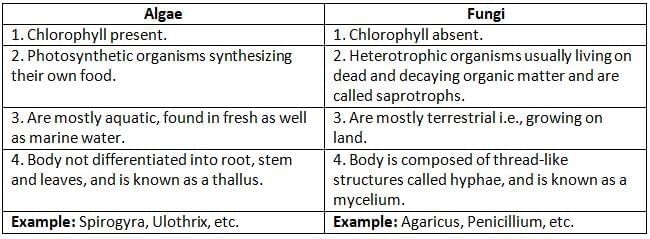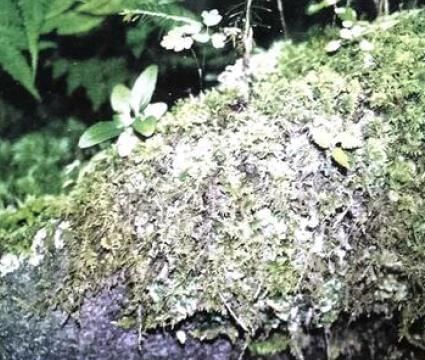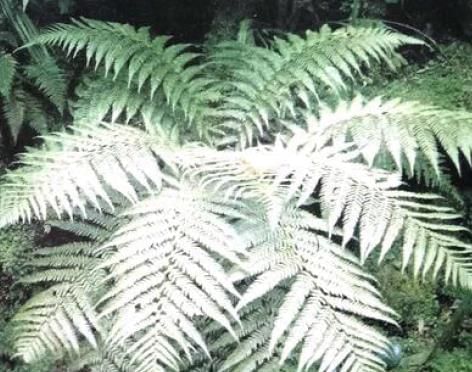Classification of Plants Chapter Notes | Biology Class 7 ICSE PDF Download
Introduction
We know that the subject Biology deals with the study of living things — the plants and animals. Biologists have identified, named and grouped more than a million types of plants and animals living on this earth. In order to facilitate the study of this vast variety of plants and animals, they have been classified into different groups.
Classification and Its Need
- Living organisms are divided into two main groups: plants and animals
- These groups are further split into various classes based on shared traits
- Classification allows for systematic study of organisms
- Grouping is based on common characteristics
- Classification arranges organisms by similarities and differences
Advantages of Classification
It is not humanly possible to study all the plants and animals that exist in the world. Scientists have made this job simpler by classifying them on the basis of similarities.
A few advantages of classification have been mentioned here:
- The characteristics of all members of a group can be understood by studying only the characteristics of a few members.
- Classification makes the study systematic. It highlights the relationship between different organisms.
- It helps in identifying different organisms and placing them into particular groups.
- It also gives us an idea about the evolution of organisms from simpler to more complex forms.
Classification of Living World
- Originally, living things were grouped into two kingdoms: Plantae and Animalia
- Issues arose, e.g., bacteria have traits of both plants and animals
- Protozoans like Euglena have plant-like chlorophyll but no cell wall and animal-like features
- In 1969, Robert Whittaker proposed a five-kingdom system
- Five kingdoms: Monera, Protista, Fungi, Plantae, and Animalia
Kingdom Monera
- Includes tiny, single-celled organisms with a cell wall but no true nucleus
- Have a simple nucleoid with genetic material
Example: bacteria
Kingdom Protista
- Consists of single-celled organisms with a well-formed nucleus
Examples: Amoeba, Paramecium, Chlamydomonas, Euglena
Kingdom Fungi
- Mostly multicellular organisms without chlorophyll
- Cannot make their own food; feed on dead or decaying matter
- Known as saprotrophs
Examples: mushrooms, yeasts, bread moulds
Kingdom Plantae:
- Includes multicellular eukaryotes with a cellulose cell wall, and chlorophyll present in their cells.
- They are autotrophs and conduct photosynthesis.
Kingdom Animalia:
- Includes all multicellular animals with heterotrophic mode of nutrition.
- They depend on plants or other animals for food.
- They possess a nervous system with sense organs and unlike plants, can move from one place to another.
kingdom Monera
- This kingdom mainly contains bacteria.
- They are composed of a single cell but differ from other single-celled organisms because their nuclear material is not enclosed in a nuclear membrane but is organized in a region called a nucleoid.
- Since the nuclear membrane is absent, bacteria are called prokaryotes.
- Their cell-wall, although not made of cellulose, is a rigid structure.
- Many bacteria feed by absorption of the digested food.
- Hence, they are called heterotrophs.
- Many others live on other living organisms and are called parasites.
Bacteria
- Very small and simple in structure
- Found in air, water, soil, and inside humans, plants, and animals
- Can survive extreme temperatures
- Visible only under a high-powered microscope
Shapes of Bacteria
- Coccus: spherical or oval-shaped
- Bacillus: rod-shaped, may be single or in chains
- Spirillum: spiral-shaped
- Vibrio: comma-shaped, e.g., Vibrio cholerae causes cholera
Structure of a Bacterium Cell
- Has a simple nucleus without a membrane, just chromatin material
- Cell wall made mostly of protein-like material
- Surrounded by a gelatinous or proteinaceous capsule
- Lacks nucleolus, mitochondria, and plastids
- Stores food as glycogen
Useful Bacteria
- Used in medicines: Antibiotics are medicines that can destroy disease-causing germs in the body. Certain types ofBacteria are used in the manufacture of antibiotics such as Streptomycin to treat various human diseases. These antibiotics are used in treating many plant and animal diseases also. Killed or weakened bacteria are used in the preparation of vaccines. Vaccines are used in preventing diseases such as polio, tuberculosis, small pox, etc.
- Lactobacillus bacteria is used for curdling of milk (formation of curd from milk). It converts the milk sugar (lactose) into lactic acid, giving the sour taste to the curd.
- Certain bacteria like Acetobacter ferment fruit juices into vinegar (acetic acid).
- Tanning of leather: Certain bacteria are used in curing of animal hides and skin.
- Retting of fibres: Jute fibres are separated and made softer by the use of bacteria.
- Formation of compost and manure:Cow dung, horse dung and agricultural wastes are subjected to bacterial action which causes their decay and produce very useful manure.
- Biogas and “gobar gas”:There are sewage plants in big cities (Delhi has one such unit) where the collected human excreta is decomposed by sewage bacteria. The inflammable gas produced in the process is collected for cooking, and the liquid and solid products are used as manure.
Harmful Bacteria
- Spoilage of food. Food items such as milk, meat, fish and vegetables get spoiled quickly due to the presence of bacteria. Tinned and packaged foods should not be consumed after their expiry date as it can be infected by the bacteria.
- Diseases. Bacteria are responsible for a number of diseases, some of which are typhoid, leprosy, TB, pneumonia, cholera, etc.
Kingdom Protista: Amoeba
- One of the simplest single-celled animals
- Visible only under a microscope
- Lives in ponds, ditches, and stagnant water
- Has an irregular shape
- Outer layer is the cell membrane
- Contains a prominent nucleus surrounded by cytoplasm
How an Amoeba Moves
- Uses pseudopodia (false feet) for movement
- Pseudopodia are temporary, finger-like extensions of cytoplasm and cell membrane
- Extends pseudopodia in the direction it wants to move
- This movement is called amoeboid movement
How an Amoeba Feeds
- Moves toward food using pseudopodia
- Surrounds food particle with two pseudopodia
- Tips of pseudopodia fuse, forming a food vacuole
- Cytoplasm releases digestive juices into the vacuole
- Food is broken down into simple, soluble form
- Soluble food is absorbed into cytoplasm for growth and energy
- Undigested food is expelled through the cell membrane
- Digestion happens only in the food vacuole to protect cytoplasm
How an Amoeba ''Excretes''
- Main waste product is ammonia
- Ammonia is removed through the body surface by diffusion
- Excess water collects in the contractile vacuole
- Ammonia, being water-soluble, may exit with water via the contractile vacuole
- Contractile vacuole expands with water and shrinks after release
- Nitrogenous wastes also exit directly through the cell surface
How an Amoeba Respires
- Gases are exchanged through the cell membrane
- Oxygen from water diffuses into the cytoplasm
- Carbon dioxide from the amoeba diffuses out into the water
How an Amoeba Reproduces
- Reproduces by binary fission, splitting into two
- Nucleus divides first, then the cell splits
- Each half gets one daughter nucleus
- Two new amoebae grow and live independently
- In harsh conditions (dry, hot, or cold), amoeba forms a cyst
- Withdraws pseudopodia and secretes a thick wall to become a cyst
- Inside the cyst, nucleus divides multiple times (multiple fission)
- Each daughter nucleus forms an amoebula with some cytoplasm
- Cyst breaks open to release amoebulae
- Each amoebula grows into a young amoeba

Kingdom Fungi
- May be single-celled (e.g., yeast) or multicellular and filamentous
- Nuclei are spread throughout the cytoplasm
- Lack chlorophyll, so they cannot make food
- Feed on dead and decaying matter, called saprophytes
- Include mushrooms, toadstools, and bracket fungi on tree trunks
- Mould fungi grow on stale bread, cheese, and fruit
Bread Mould
- A common fungus on stale bread
- Body made of thread-like hyphae, forming a network called mycelium
- Mature hyphae grow erect structures called sporangiophores
- Sporangiophores have rounded sporangia at the tips
- Sporangia contain spores
- When sporangium bursts, spores spread through the air
- Spores landing on suitable surfaces grow into new mycelium
- Respiration is aerobic, using oxygen, so mould grows on bread's surface
- Follows saprophytic nutrition, feeding on dead matter
- Hyphae secrete digestive juices to break down starch into glucose
- Glucose is absorbed and stored as glycogen
- Digestion happens outside the body, nutrients absorbed by hyphae
Useful Fungi
- Some mushrooms, like Morchella and Agaricus, are edible
- Yeast, a single-celled fungus, helps in baking bread
- Yeast is used in breweries to make alcohol
- Yeast produces vitamin B
- Fungi decompose dead matter, returning nutrients to soil
- Penicillin, an antibiotic, comes from Penicillium notatum
- Mucor and Penicillium species aid in cheese ripening
Harmful Fungi
- Some moulds spoil food, leather, and textiles
- Fungi attack crops, causing major losses to farmers
- Cause skin and lung infections in humans
- Common infections include athlete's foot and ringworm
Kingdom Plantae
- Second largest kingdom, with over 250,000 species
- Organisms are multicellular and eukaryotic
- Contain chlorophyll, a green pigment for photosynthesis
- Autotrophic, making their own food
- Provide food and oxygen for other organisms
- Life on Earth depends on plants
- Divided into algae, mosses, ferns, and flowering plants
- Algae
- Live in water, can be single-celled or multicellular
- Usually green due to chlorophyll
- Examples: Spirogyra
- Some algae are red or brown
Differences between Algae and Fungi

Mosses (Bryophyta)
- Grow as green, velvety layers in moist places
- Found on damp soil, tree bark, and walls
- Have stems and leaves but no true roots
- Use thread-like rhizoids to stick to surfaces and absorb water
- Called 'amphibians of the plant group' due to water needed for reproduction

Ferns (Pteridophyta)
- Grown in gardens for beautiful leaves
- Have well-formed leaves, stems, and roots
- Do not produce flowers or seeds
- Leaves have small, rounded bodies on the underside
- These bodies contain spores that scatter to grow new plants

Flowering Plants (Phanerogams)
Divided into two groups: gymnosperms and angiosperms
Gymnosperms
- Bear seeds but no fruits
- Seeds are thin and naked, not inside fruits
- Most are evergreen, not shedding all leaves at once
Examples: pine, fir, cedar, and spruce trees in mountains
- Do not have true flowers, but bear seeds in cones
- Cones can be male or female
Angiosperms
- Bear flowers, fruits, and seeds
- Seeds are enclosed in fruits
Examples: cashew nut, grass, sugarcane, mango tree
Type of Angiosperms
Divided into monocotyledons and dicotyledons based on cotyledon number
Monocotyledons
- Seeds have one cotyledon (seed leaf)
Examples: rice, grass, maize
Dicotyledons
- Plants containing two cotyledons or two seed leaves.
Examples: mango, sunflower, rose, balsam, pea, brinjal, etc.
|
20 videos|51 docs|7 tests
|
FAQs on Classification of Plants Chapter Notes - Biology Class 7 ICSE
| 1. What is the importance of classification in biology? |  |
| 2. What are the main advantages of classifying living organisms? |  |
| 3. Can you explain the structure of a bacterium cell? |  |
| 4. What are some examples of useful and harmful bacteria? |  |
| 5. What distinguishes the Kingdom Protista from other kingdoms? |  |





















